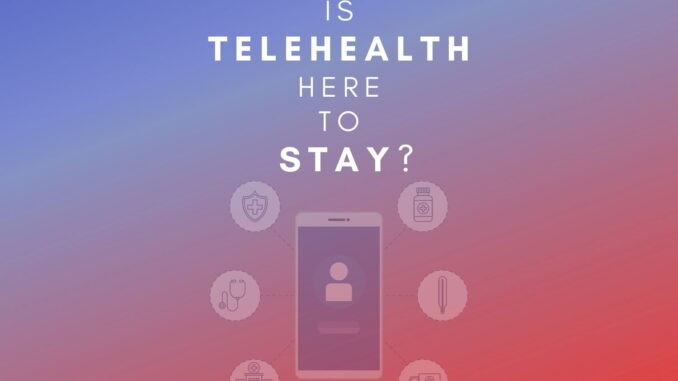
Telehealth was an immediate solution to the Covid-19 pandemic and quickly changed how we access and experience healthcare.
During the peak of the pandemic, the UK health secretary Matt Hancock declared that all GPs should see patients remotely by default, which saw an increase in virtual appointments from 25% to 71%.
The government’s stay-at-home orders, the requirements to reduce face to face contact, and the fear of Coronavirus brought a whole new reality of virtual appointments, diagnosis, evaluations and more.
However, many are now wondering if Telehealth is a must for healthcare providers after the pandemic subsides.
What Is Telehealth?
Telehealth is a broad term that refers to the use of digital information and communication technologies to access, manage and provide healthcare remotely.
It allows professionals to deliver care whilst not being in the same physical location as their patients.
According to Deloitte, 78% of UK clinicians surveyed say their organisation increased the adoption of digital technologies to meet the growing need for remote working because of the pandemic, and 80% increased the adoption to offer virtual support and more effective ways of engaging with patients.
With technology becoming more advanced, healthcare providers can now use just about any electronic device to hold virtual visits and more.
There are no doubts that the effects of the Covid-19 pandemic will continue for now, so gaining an insight into how technologies could be adopted and used efficiently can really add value to healthcare and providers.
The Benefits of Telehealth So Far
The use of digital technology across healthcare industries has enabled remote working, freeing up space and capacity in hospitals while reducing the spread of Coronavirus.
All solutions are software-based, which reduces the costs, but data security and encryption systems must be deployed to protect patient privacy.
Providing support to patients with:
What Are The Challenges?
The pandemic has forced healthcare providers to review what is possible and adapt models of care to the rapidly changing situation, and some of these changes are likely to remain.
But it is crucial to understand what the key challenges are to adopting technology-based approaches to care.
The three main areas of concerns are
Digital skills
Providers and recipients of care need to be able to use digital devices such as computers, smartphones and the internet.
One of the barriers is the availability of good internet communications, which some patients might not be able to access without the right infrastructure.
The services and solutions need to be designed and tailored to meet all users’ needs.
Moving Forward
For Telehealth to successfully remain in place long after the pandemic is gone, we must find the long term impact on patients’ access to and quality of care.
To fully optimise digital inclusion, providers need to learn what works best, where, when and why in order to tackle the challenges.
It is also essential to understand the experiences of patients and staff to improve healthcare delivery and services.
Marketing Techniques For Telehealth
The increase in home-based customers calls for a strong digital presence.
Whether you are looking to bring awareness to your current Telehealth practice or just starting to adopt the use of digital technology, healthcare digital marketing can help you retain current and obtain new consumers.
Here are some of the top ways you can make sure to build your online presence, promote and bring awareness to your technology-enabled care services:

Leave a Reply